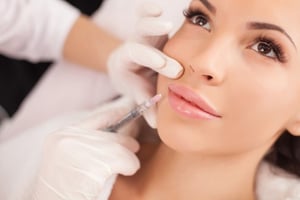PicoWay is a popular laser treatment that is used to address a variety of skin conditions,...
Wrinkles: Causes, Types, and Treatment Options
Wrinkles are a natural part of the aging process, but for many people, they can be a source of concern and insecurity. While wrinkles are inevitable, there are ways to prevent and reduce their appearance. In this blog, we will explore the causes of wrinkles, the different types of wrinkles, and the various treatments and prevention methods available.

What causes wrinkles?
Wrinkles are caused by a combination of factors, including genetics, sun exposure, and the natural aging process. As we age, our skin loses elasticity and collagen, two key components that help keep our skin smooth and plump. This loss of elasticity and collagen leads to the formation of wrinkles, particularly on the face, neck, and hands.
Sun exposure is another major cause of wrinkles. Ultraviolet (UV) rays from the sun can damage the skin and accelerate the aging process. This damage can cause the skin to become dry, rough, and wrinkled.
Smoking is also a known cause of wrinkles. The chemicals in tobacco smoke can damage the skin and decrease its elasticity, leading to the formation of wrinkles.
Types of wrinkles
There are several different types of wrinkles, each with its own unique characteristics and causes.
- Fine lines are the earliest and most subtle form of wrinkles. They are often found around the eyes and mouth, and are caused by a combination of aging and sun exposure.
- Deep wrinkles are more pronounced and are often found on the forehead, around the mouth, and on the neck. They are caused by a loss of collagen and elastin in the skin.
- Dynamic wrinkles are caused by repetitive facial expressions, such as smiling, frowning, or squinting. These wrinkles are often found around the eyes, mouth, and forehead.
Treatment and prevention
There are many different treatments and prevention methods available for reducing the appearance of wrinkles. The most effective treatment will depend on the type and severity of the wrinkles, as well as the individual's skin type and preferences.
Topical treatments
Topical treatments, such as creams and serums, can help to moisturize the skin and stimulate the production of collagen and elastin. These treatments can be effective for fine lines and early-stage wrinkles.
Injectables
Injectables, such as Botox and dermal fillers, can help to smooth out dynamic wrinkles and restore volume to the skin. These treatments are typically performed by a licensed provider and can provide long-lasting results.
Laser and light-based treatments
Laser and light-based treatments, such as PicoWay and IPL, can help to stimulate the production of collagen and improve the texture and tone of the skin. These treatments are often used for deeper wrinkles and sun damage.
Prevention
The best way to prevent wrinkles is to protect your skin from sun damage and maintain a healthy lifestyle. This includes using a broad-spectrum sunscreen with at least SPF 30, avoiding prolonged sun exposure, and not smoking.
In addition, a healthy diet and regular exercise can help to support healthy skin and prevent the formation of wrinkles. Eating a diet rich in fruits, vegetables, and healthy fats can provide the skin with the nutrients it needs to stay healthy and youthful. Regular exercise can also help to improve circulation and promote collagen production.
Conclusion
Wrinkles are a natural part of the aging process, but there are ways to prevent and reduce their appearance. By protecting your skin from sun damage, maintaining a healthy lifestyle, and using proven treatments, you can keep your skin looking smooth and youthful for longer.


